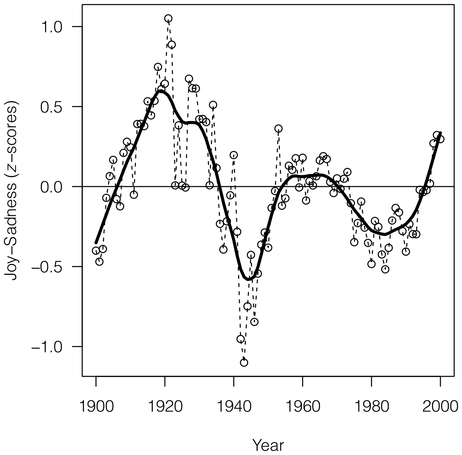Several years ago, more or less on a lark, a group of researchers from England used a computer program to analyze the emotional content of books from every year of the 20th century — close to a billion words in millions of books.
The original idea was to have the computer program track the use of these words over time. The researchers wanted to see if certain words, at certain moments, became more popular.
“We didn’t really expect to find anything,” he says. “We were just curious. We really expected the use of emotion words to be constant through time.”
Instead, in the study they published in the journal PLOS ONE, the anthropologists found very distinct peaks and valleys, Bently says. “The clarity of some of the patterns was surprising to all of us, I think.”
He found that interesting because the books the computers searched in the Google database included an incredibly wide range of topics. They weren’t just novels or books about current events, Bentley says. Many were books without clear emotional content — technical manuals about plants and animals, for example, or automotive repair guides.
“It’s not like the change in emotion is because people are writing about the Depression and people are writing about the war,” he says. “There might be a little bit of that, but this is just, kind of, averaged over all books, and it’s just kind of creeping in.”
Which brings us to the most surprising finding of the study: We think of modern culture — and often ourselves — as more emotionally open than people in the past. We live in a world of reality television and blogs and Facebook — it feels like feelings are everywhere, displayed to a degree that they never were before. But according to this research, that’s not so.
“Generally speaking, the usage of these commonly known emotion words has been in decline over the 20th century,” Bentley says. We used words that expressed our emotions less in the year 2000 than we did 100 years earlier — words about sadness and joy and anger and disgust and surprise.
